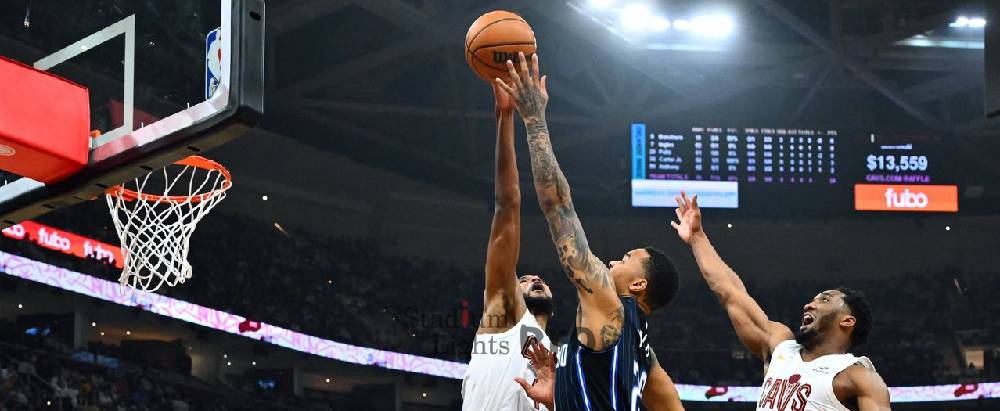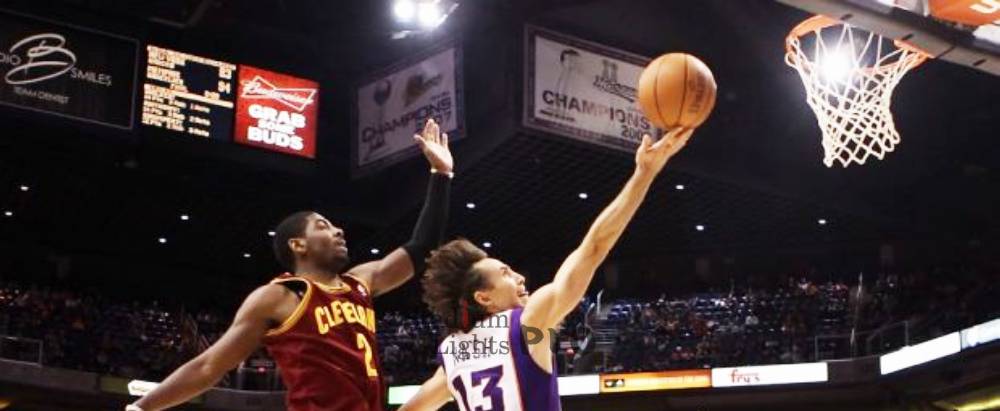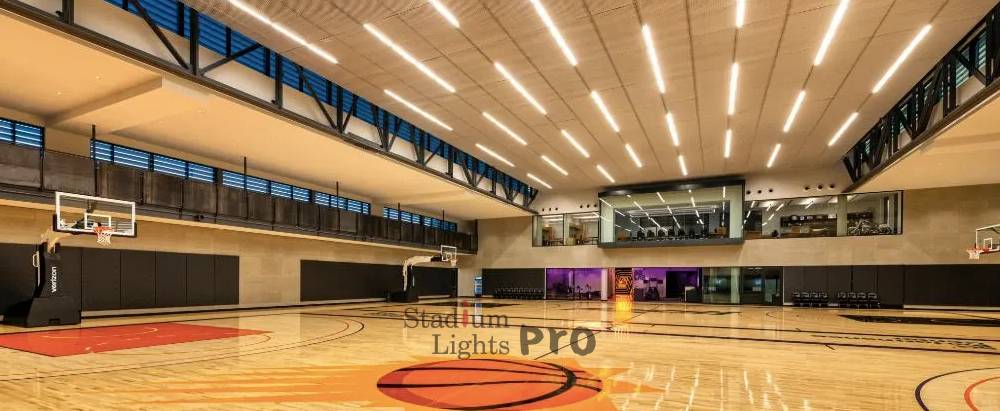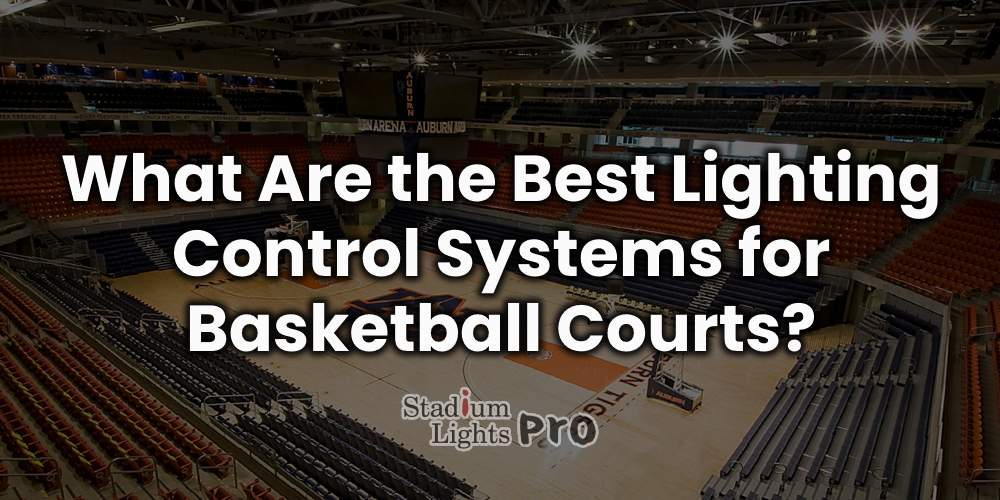The choice of a lighting control system can greatly influence the quality of illumination, player performance, and spectator enjoyment. This article provides an in-depth look at various lighting control systems suitable for basketball courts, including their features, benefits, and how to select the most appropriate system based on different court types and requirements.
Table of Contents
ToggleOverview of Lighting Control Systems

Manual Controls
Manual controls are the most basic form of lighting control. These systems include traditional switches, dimmers, and manual sliders that allow users to adjust lighting levels directly. Manual controls are generally simple to use and cost-effective, which makes them an attractive option for basic lighting needs. However, they come with limitations that can impact their effectiveness in more demanding settings.
One of the primary drawbacks of manual controls is their lack of flexibility. In a basketball court environment, where lighting requirements can change frequently—such as during different phases of a game or practice session—manual controls can be cumbersome. Adjustments must be made manually each time, which can be inefficient and may not provide the precision required for optimal lighting. Additionally, manual systems do not offer features like programmability or integration with other technologies, which can limit their functionality in more complex setups.
Digital Lighting Control Systems
Digital lighting control systems represent a significant step up from manual controls, offering a higher level of functionality and precision. These systems typically use interfaces such as touch panels, remote controls, or mobile apps to manage and adjust lighting. Digital controls allow users to set specific lighting configurations and make adjustments with a high degree of accuracy.
One of the key advantages of digital systems is their ability to store multiple lighting configurations. This feature is particularly useful in environments like basketball courts, where different lighting setups may be needed for various scenarios, such as practice sessions, games, or special events. Users can quickly switch between these pre-set configurations without having to make manual adjustments each time.
Digital systems also offer more precise control over lighting levels and can include features such as dimming, color temperature adjustments, and scene setting. This precision ensures that the lighting can be tailored to meet specific needs, enhancing both the gameplay experience and spectator visibility. While digital systems are more advanced than manual controls, they still require direct interaction to make adjustments, though this interaction is more streamlined and user-friendly.
Automated Lighting Control Systems
Automated lighting control systems take lighting management a step further by using sensors and timers to adjust illumination based on real-time conditions. These systems are designed to automatically manage lighting levels, reducing the need for manual intervention and ensuring that the lighting remains consistent throughout different phases of a game or practice session.
Automated systems are equipped with sensors that can detect changes in ambient light, occupancy, or other environmental factors. For example, if the lighting in a basketball court needs to adjust based on the time of day or changing light conditions, automated systems can make these adjustments without requiring manual input. This feature is particularly beneficial in settings where lighting conditions change frequently or need to be adapted in real-time.
Additionally, automated systems can be programmed to follow specific schedules or routines. This means that lighting can be set to automatically adjust at predetermined times, such as dimming before a game or brightening for a practice session. This level of automation enhances convenience and ensures that lighting conditions are always appropriate for the activity taking place.
Smart Lighting Control Systems
Smart lighting control systems represent the most advanced option, integrating with Internet of Things (IoT) technology to offer a wide range of features and capabilities. These systems provide high levels of convenience and adaptability, allowing users to control lighting remotely and customize settings extensively.
Smart systems offer remote access through mobile apps or web interfaces, enabling users to manage lighting from anywhere. This feature is particularly valuable for basketball courts that require frequent or remote adjustments, such as during games where quick changes in lighting may be necessary. Users can adjust brightness, color temperature, and other settings without needing to be physically present.
Another significant advantage of smart lighting systems is their ability to integrate with other smart devices and technologies. For example, smart lighting can be synchronized with sound systems or video displays to create coordinated effects. This integration enhances the overall experience for both players and spectators, making it easier to manage lighting in conjunction with other elements of the court environment.
Smart systems also offer extensive programmability, allowing users to create and schedule complex lighting routines. This capability enables tailored lighting configurations for different events or activities, ensuring that the court is always properly illuminated. Additionally, smart systems often include advanced features such as energy monitoring and usage analytics, which can help optimize lighting performance and reduce operational costs.
Differences Between Lighting Control Systems

Ease of Use
The ease of use of a lighting control system is a critical factor in its effectiveness. Manual controls, such as simple switches and dimmers, are straightforward and intuitive. They allow users to make immediate adjustments without any complex procedures. However, this simplicity comes with limitations. For basketball courts, where precise and frequent adjustments might be necessary, manual controls can be inadequate. They lack the advanced features needed for dynamic lighting environments and require direct interaction each time an adjustment is needed.
Digital lighting control systems offer an improvement in ease of use by incorporating more advanced interfaces. These might include touch panels, remote controls, or mobile apps. These systems allow for more precise control over lighting levels and configurations. Users can easily adjust settings and save different configurations for various scenarios, such as game time, practice, or special events. The use of digital controls simplifies the process of managing lighting, providing a more refined and user-friendly experience compared to manual controls.
Automated lighting control systems further enhance ease of use by reducing the need for manual intervention. These systems use sensors and timers to make real-time adjustments based on current conditions, such as changes in ambient light or occupancy. This automation means that lighting can be adjusted automatically without any manual input, ensuring that the court is always properly illuminated. While users may need to set initial parameters, the system handles routine adjustments, making it easier to maintain optimal lighting conditions.
Smart lighting control systems offer the highest level of user-friendly operation. These systems integrate with IoT technology, allowing for remote access and control through mobile apps or web interfaces. Users can manage lighting from anywhere, schedule routines, and make adjustments in real time. The advanced programming options available with smart systems further enhance ease of use, making them highly adaptable to varying needs and providing a seamless management experience.
Flexibility
Flexibility is a key consideration when choosing a lighting control system for a basketball court. Different systems offer varying degrees of adaptability to different scenarios and times of day.
Manual controls offer limited flexibility. While they are simple to use, they do not support advanced programming or automated adjustments. This means that any changes to lighting conditions must be made manually, which can be cumbersome if the court requires frequent adjustments.
Digital lighting control systems provide a higher level of flexibility. These systems can store multiple lighting configurations and allow for easy adjustments based on different scenarios. For example, users can program settings for different phases of a game, practice sessions, or special events. This ability to create and save different configurations enhances the system’s adaptability and makes it more suitable for environments with varying lighting needs.
Automated lighting control systems offer considerable flexibility by automatically adjusting lighting based on real-time conditions. These systems can respond to changes in ambient light, occupancy, or other factors, ensuring that lighting conditions are always appropriate. Automated systems can also be programmed to follow specific schedules, such as dimming the lights before a game or brightening them for practice sessions. This level of flexibility reduces the need for manual adjustments and ensures that the lighting remains consistent and effective.
Smart lighting control systems provide the greatest flexibility. They allow for extensive programming and remote management, enabling users to create complex lighting routines and adjust settings from anywhere. Smart systems can be integrated with other technologies and customized to accommodate a wide range of lighting needs. This adaptability makes smart systems ideal for environments where flexibility is crucial, such as professional basketball courts or settings with varying lighting requirements.
Integration Capabilities
The ability of a lighting control system to integrate with other technologies is an important factor in enhancing the overall experience of a basketball court. Integration capabilities determine how well the lighting system can work in conjunction with other systems, such as sound or video equipment.
Manual controls generally offer limited integration capabilities. They are standalone systems that do not support integration with other technologies. This limitation can be a drawback in environments where coordinated effects or enhanced functionality are desired.
Digital lighting control systems offer better integration capabilities compared to manual controls. These systems can be connected to other technologies, such as sound systems or video displays, allowing for coordinated lighting effects. For instance, lighting can be synchronized with audio cues or visual elements to create a more immersive experience during games or events. While digital systems provide improved integration, they may not offer the same level of connectivity and customization as more advanced systems.
Automated lighting control systems also support integration with other technologies. These systems can work with sensors and timers to create coordinated lighting effects based on real-time conditions. Integration with other systems can enhance the overall functionality and effectiveness of the lighting setup, making it suitable for dynamic environments where synchronization with other elements is important.
Smart lighting control systems excel in integration capabilities. They are designed to work seamlessly with a wide range of smart devices and technologies. This allows for sophisticated coordination between lighting, sound, video, and other systems. Smart systems can be integrated into a broader network of connected devices, providing a cohesive and customizable experience. For example, lighting can be programmed to change in response to events happening on the court or to synchronize with multimedia presentations. The advanced integration capabilities of smart systems make them ideal for complex environments where comprehensive control and coordination are required.
Cost
Cost is a significant factor in choosing a lighting control system, and it varies depending on the features and capabilities of the system. Understanding the cost implications of different systems can help balance budget constraints with desired functionality.
Manual controls are generally the most affordable option. Their simplicity and lack of advanced features contribute to their lower cost. For basic lighting needs, such as in a recreational basketball court, manual controls can be a cost-effective solution. However, their limitations in terms of flexibility and advanced functionality may not justify the expense for more demanding applications.
Digital lighting control systems are more expensive than manual controls but offer greater functionality and precision. The cost of digital systems reflects their advanced interfaces, programmability, and ability to store multiple configurations. These systems provide enhanced control and adaptability, making them a good choice for environments where more sophisticated lighting management is needed.
Automated lighting control systems come with a higher price tag due to their advanced features and real-time adjustment capabilities. The cost of these systems is justified by their ability to automatically manage lighting based on changing conditions, reducing the need for manual adjustments and ensuring consistent illumination. Automated systems are particularly valuable in settings where frequent changes in lighting conditions are required.
Smart lighting control systems typically represent the highest cost due to their advanced technology and extensive features. The integration with IoT technology, remote access, and extensive programmability contribute to the higher price. While the initial investment is greater, the benefits of smart systems—such as remote control, extensive customization, and integration with other smart devices—can provide long-term value and efficiency. For environments where flexibility, advanced functionality, and integration are essential, the investment in a smart system may be well worth the cost.
Considerations When Choosing a Lighting Control System

Purpose and Use of the Court
The intended use of the basketball court is a fundamental factor in selecting an appropriate lighting control system. For indoor courts, where lighting conditions are generally more controlled, systems that offer precise control and adaptability are essential. Digital and smart lighting control systems are well-suited for indoor settings because they provide detailed adjustments, such as fine-tuning brightness and color temperature to meet the specific needs of different activities, such as practice or competitive games. These systems also enable the storage and recall of various lighting configurations, which can enhance the versatility of the court’s lighting.
Outdoor basketball courts present a different set of challenges due to their exposure to varying light conditions and weather factors. For these environments, smart or automated lighting control systems are often the best choice. Smart systems can adjust lighting based on real-time weather conditions or ambient light levels, ensuring consistent illumination regardless of external factors. Automated systems, on the other hand, can use sensors to detect changes in light and adjust the lighting accordingly, providing a reliable solution for outdoor courts that need to maintain proper lighting throughout different times of day and in various weather conditions.
Recreational basketball courts, which are typically used for casual play, may not require the advanced features offered by higher-end systems. Manual or basic digital systems might be sufficient for these courts, providing the necessary functionality at a lower cost. Professional basketball courts, however, have more stringent requirements, often including compliance with broadcasting standards and the need for highly precise lighting control. For these settings, advanced digital or smart systems are necessary to achieve the level of performance and detail required for high-stakes games and live broadcasts.
Lighting Requirements
The specific lighting needs of the basketball court are crucial in determining the most suitable control system. Brightness levels and uniformity are essential to ensure that the court is well-lit and free from glare, which can affect both players and spectators. Systems that offer precise control over brightness levels are beneficial, as they allow for adjustments to maintain consistent illumination across the entire court. This is particularly important for maintaining uniform lighting, which helps prevent dark spots or areas of excessive brightness that could impact gameplay.
Digital and smart lighting control systems excel in providing the necessary capabilities to meet these lighting requirements. Digital systems offer fine-tuned control over various lighting parameters and can store different lighting configurations for various uses. This allows users to adjust settings as needed to ensure optimal visibility and performance. Smart systems go a step further by offering advanced features such as automated adjustments based on real-time data, which can help maintain consistent lighting levels despite changes in ambient conditions or usage patterns.
Integration with Other Systems
If the basketball court is designed to integrate with other technologies, such as sound or video systems, the lighting control system should support these integrations. Effective coordination between lighting and other technologies can enhance the overall experience, creating a more immersive environment for both players and spectators. For example, synchronized lighting effects can be used to complement audio cues or visual elements during games or events, adding to the excitement and engagement of the experience.
Digital and smart lighting control systems are generally better equipped to handle these integrations. They often come with compatibility features that allow them to work seamlessly with other systems. For instance, smart systems can be integrated with building management systems, audio-visual equipment, and other smart devices to create coordinated lighting scenarios. Ensuring that the chosen lighting control system supports these integrations can maximize the functionality and versatility of the court’s lighting setup.
Ease of Operation
The ease of operating the lighting control system is an important consideration, as it affects how efficiently users can manage the lighting. Systems with intuitive interfaces—such as digital touch panels or smart apps—simplify the process of making adjustments and managing settings. This ease of operation is particularly valuable in environments where quick and frequent changes to the lighting may be required, such as during live events or practice sessions.
Smart lighting systems offer enhanced convenience with their remote control capabilities. Users can manage lighting from anywhere using mobile apps or web interfaces, which can be especially useful for making real-time adjustments during games or events. The ability to control lighting remotely adds a layer of flexibility and ease of use, making it simpler to maintain optimal lighting conditions without needing to be physically present at the court.
Future Upgrades
When choosing a lighting control system, it’s important to consider the potential for future upgrades or changes. Opting for a system that accommodates future modifications or additional features can provide long-term value and flexibility. As the needs of the basketball court evolve, having a lighting control system that can be upgraded or expanded will ensure that it continues to meet new demands and technological advancements.
Scalability and modular upgrade options are key features to look for in a lighting control system. A system that allows for easy upgrades or the addition of new components can adapt to changing requirements over time. This might include adding new control panels, integrating additional technologies, or expanding the system to accommodate a larger or more complex setup. Planning for future upgrades ensures that the lighting control system remains relevant and effective as the court’s needs and technology landscape evolve.
Recommendations for Different Basketball Courts
Indoor Basketball Courts
For indoor basketball courts, where precise control over lighting is crucial, digital, automated, or smart systems are recommended. Digital systems offer detailed control and the ability to adjust lighting configurations as needed. Automated systems ensure consistent lighting by adjusting automatically based on real-time conditions. Smart systems provide the most advanced features, including remote control and extensive programming, making them suitable for complex indoor environments.
Outdoor Basketball Courts
Outdoor basketball courts face additional challenges such as changing natural light and weather conditions. Smart systems are well-suited for these environments due to their ability to adapt to varying conditions. Automated systems that adjust based on ambient light can also be beneficial, helping to maintain consistent illumination despite external changes.
Recreational Basketball Courts
Recreational basketball courts, which typically have less demanding lighting requirements, may benefit from manual controls or basic digital systems. Manual controls offer a cost-effective solution for casual play, while basic digital systems provide more flexibility and ease of use for recreational settings.
Professional Basketball Courts
Professional basketball courts require advanced lighting control to meet high standards for broadcasting and gameplay. Digital systems provide precise control and configurations necessary for professional use. Automated systems maintain consistent lighting and adjust automatically for different events. Smart systems, with their extensive control features and integration capabilities, are ideal for professional courts where advanced functionality is required.
LED Lights and Lighting Control Systems
Advantages of LED Lights
LED lights are known for their energy efficiency and long lifespan, which help reduce operational costs. They provide bright, uniform illumination with minimal glare, which is important for both player performance and spectator comfort. Their adaptability in brightness and color temperature makes them well-suited for various lighting control systems.
Integration with Lighting Control Systems
LED lights work well with digital, automated, and smart lighting control systems. These systems allow for precise adjustments and programming, enhancing the overall lighting experience. Smart systems, in particular, offer advanced features that complement LED technology, providing remote control and extensive customization options.
Conclusion
From manual controls to sophisticated smart systems, each option offers distinct advantages and limitations. Manual controls may be cost-effective for simpler needs, while digital systems provide improved precision and configurability. Automated systems enhance convenience with real-time adjustments, and smart systems offer the highest level of adaptability, integration, and remote control. The choice of system should align with the court’s purpose, lighting requirements, and potential for future upgrades. By carefully considering these factors, facility managers can ensure that the chosen lighting control system meets the demands of various basketball environments, enhancing performance and enjoyment for all users.

